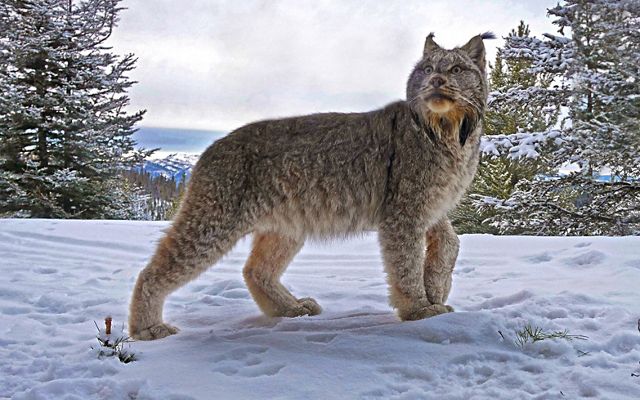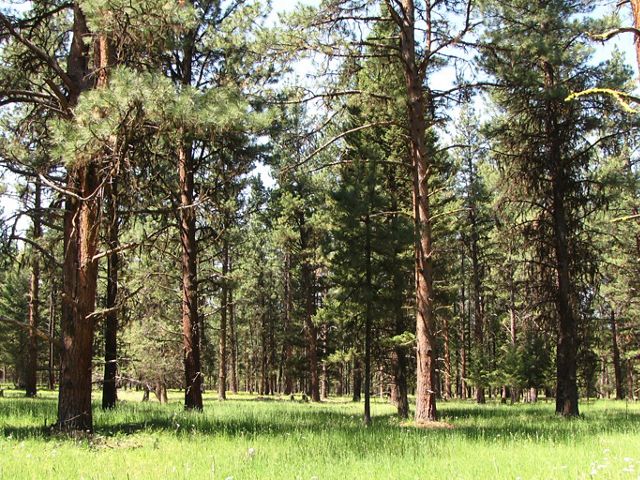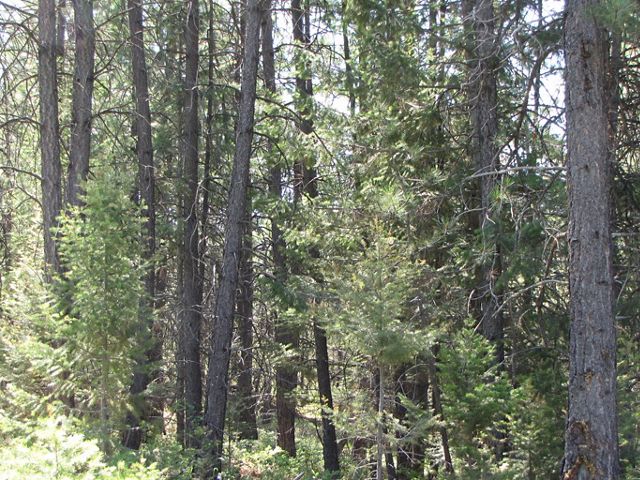With restoration and collaborative community engagement, we are ensuring our forests thrive even in the face of growing threats.
More and more people are enjoying Montana’s outdoors, including visits to our TNC lands. With so many of us out there, please remember to douse your campfires, pack out trash, stay on marked trails and roads and leave no trace that you were there. Nature will thank you! Read our open lands policy.
Montana forests shelter wildlife, clean our air and water, moderate Earth’s climate and provide places where we work and play. But our forests are in trouble. A century of misunderstanding the critical role of fire in our forests, plus a period of aggressive logging have left them dangerously out of balance. On top of that, climate change is bringing hotter, drier summers that lengthen and intensify the wildfire season. Growing development threatens to block the movement of wildlife such as elusive Canada lynx and wolverines. The Nature Conservancy is actively restoring Montana forests to return them to a state where both people and nature thrive.
The forest's balance can return. Through science and community collaboration TNC is restoring the health and resilience our forests need to face those threats.
The Role of Fire
For thousands of years, fire was the major force shaping Montana forests. Fires varied in frequency and severity, but kept forests healthy and resilient. But, after a devastating series of fires swept through the West in 1910, people started to see fire as the enemy. We rushed to fight any and all fire. Ironically, snuffing out these periodic burns put forests at greater risk for severe, large-scale fires.
Today, forests have become uncharacteristically crowded compared to historic conditions, making it easier for insects and wildfire to spread from tree to tree. The dense growth shades out a lot of forage for wildlife and can make fires far more severe and more dangerous and costly to fight. Climate change is magnifying the problem. Each year, the cost of firefighting grows, along with the threat to water, lives and property.
We cannot, nor should we, stop all forest fires. TNC is taking steps to return fire as a natural and beneficial part of the forest life cycle.
Restoring Balance
Our forest restoration is multi-faceted and guided by the best available science. The first step is thinning forests to remove the small trees that could fuel unnaturally severe wildfires. The second step, depending on forest type and conditions, is to set prescribed fires that will clear out the remaining understory fuels, leaving the forests better able to survive and thrive should a natural fire be sparked.
Successful forest restoration requires a new way of thinking about forestry and sufficient funds to execute. This can be especially challenging to implement on the millions of acres of public forests in Montana. One way TNC is helping advance restoration is by fostering cooperation between public and private landowners on cross-boundary projects.
Preserving Natural Values
Montana forests are home to a variety of wildlife – many of the animals existing few other places on Earth. Wildlife such as grizzly bears, wolverine, deer and elk use and migrate through these forests. Some, like the elusive Canada lynx, have a tenuous toehold as climate change dramatically alters their habitat. Our restoration work is improving habitat for these animals and our ownership and future planning is preserving the vital connections between the places that they need to feed, breed and rear their young.

Community Counts
TNC is leading by example to show the economic, social and ecological benefits of forest restoration. We’re bringing together folks who use the forest for work and recreation, sharing their ideas for the future of the forests after TNC has transferred our land to public ownership. We are also working with state, federal and local crews to build everyone’s ability to use both thinning and prescribed fire to restore Montana forests.
What You Can Do
- If you live near a forest make sure your home is Fire Wise.
- Support land protection in forests so they can remain functioning as forests.
- Learn more about the natural role of fire and some of the tools forest managers use to help restore forests.
Making it Whole
Our forest work is focused on the Crown of the Continent—a 10-million-acre mosaic of habitat where wildlife such as grizzly bears, lynx and wolverines still roam. During the settlement of the West, key sections of this wild land were carved up into a checkerboard of public and private ownership that threatened to destroy the natural integrity of the Crown. Roads bisected vital migration routes and intense logging and development disturbed important habitat.
Since 1997, TNC has purchased more than half a million acres within the Crown—reconnecting the fragmented landscape for the wildlife and people whose lives and livelihoods it enriches. Over the years, we’ve transferred much of that acreage to public ownership. Now, we are hard at work restoring our remaining forests so that, when we do pass it on to new owners, it will be in better shape than when we began.
Open Lands Policy
Read our Open Lands Policy for Montana forests.
For more information on the use of TNC land, contact our office in Helena at 406-443-0303.
Support Our Work to Protect Montana Forests
You can help us continue our important conservation efforts to return Montana Forests to healthy, productive landscapes and habitats.
Forest Thinning Effects on Fire
.jpg?crop=34%2C0%2C1432%2C895&wid=1640&hei=1025&scl=0.8731707317073171)
.jpg?crop=34%2C0%2C1430%2C894&wid=1640&hei=1025&scl=0.8721951219512195)



